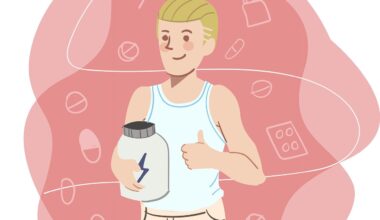Water Polo Conditioning Workouts for Endurance
Water polo conditioning workouts are essential for enhancing endurance and overall performance in this high-intensity sport. Athletes engage in various swimming drills, incorporating intervals that mirror the fast-paced nature of a match. These workouts usually blend endurance swimming, strength training, and sport-specific exercises. Swimming circuits focus on building cardiovascular endurance, allowing players to sustain energy levels throughout the game. Underwater sprints and surface swims can effectively boost anaerobic and aerobic capacity. Implementing ladder drills facilitates improved speed while enhancing overall stroke efficiency. It’s crucial to strike a balance between high-intensity bursts and recovery periods during training. Interval training sessions may vary in length and intensity. Cross-training with activities like rowing or cycling also aids in reducing the risk of injury while enhancing muscular endurance. Weight training focusing on major muscle groups will strengthen a player’s upper and lower body, contributing to overall power in the water. Resistance exercises utilizing bands or weights simulate real game scenarios for conditioning. Proper nutrition and hydration are equally important to fuel these demanding workouts. Always remember, consistency in training leads to improved performance when competing.
Building strength through land-based exercises complements water workouts for better endurance. Incorporating movements such as squats, lunges, and deadlifts targets muscle groups directly used in water polo performance. Plyometric exercises like box jumps and burpees develop explosive power and agility necessary for quick movements during matches. Weight training routines should be tailored to individual needs while ensuring comprehensive muscle development. Core stability remains a crucial aspect in water polo; thus, regular engagement in planks, Russian twists, and medicine ball throws sharpen balance and endurance. Athletes are recommended to integrate flexibility drills to enhance range of motion, especially for stroke efficiency. These combined efforts lead to improved performance, preventing common water polo injuries such as shoulder impingements or knee strains. Exploring aquatic strength workouts like resistance hammer throws or aqua jogging also contribute to diverse conditioning routines. Conditioning must involve gradual progression; thus, periodically varying workout intensity allows the body to adapt over time effectively. Athletes should assess overall well-being to avoid burnout. Journaling workouts and progress indicates which areas need improvements. Regular assessments ensure skills are sharpened for peak performance. Including rest days also ensures recovery, allowing for adjustments in training plans.
Interval Training Techniques
Interval training plays a pivotal role in developing stamina for water polo athletes. The fundamental principle involves alternating between intense effort and recovery periods to maximize performance gains. In water polo, athletes often perform sprints interspersed with slower-paced swimming or rest to simulate game-like conditions. A common interval training session might include 30-second sprint swims followed by 30 seconds of active rest, repeated across several sets. Gradually increasing the sprint duration while decreasing rest periods effectively builds anaerobic endurance. Coaches often utilize tools like swim watches to monitor times during drills. Incorporating resistance techniques, like using paddles during sprints, enhances upper body strength while sustaining high-speed efforts. Another effective method involves using buoyancy equipment or swim fins to modify resistance in recurring drills. Players can transition between various stroke styles to develop versatility. Tapering intervals over weeks aids in adapting to increased workloads without injury. Athletes are encouraged to maintain a consistent breathing rhythm for both sprint and recovery phases to maximize efficiency. Nutrition remains an integral element in optimizing energy recovery post-training and enhances overall performance levels when approaching competitions.
In preparation for intense matches, implementing sport-specific drills strengthens endurance and technical skills concurrently. Techniques such as simulated game scenarios elevate pressure and mimic real-time match conditions, thus building both physical and mental stamina. Incorporating plays that require quick transitions between offense and defense improves speed and adaptability in unpredictable game environments. Incorporate drills emphasizing communication alongside agility routes that necessitate pivoting and changing direction. Smart strategies foster deeper team collaboration while integrating physical challenges that require quick decision-making. Athletes should also engage in partner drills to further replicate game scenarios, enhancing skills under stress. Regular participation in scrimmage-style practices builds cohesion while also challenging individual abilities. Utilize time-outs during workouts to allow mental resets just like in a real game. Maintaining endurance while executing plays enhances decision-making paths in crucial moments. Time management is key; thus, training schedules must outline proper pacing to yield productive results. Group training promotes camaraderie which can significantly uplift overall morale. Setting personal targets takes individual performance to greater heights, while weekly evaluations allow fine-tuning tactics. Balancing extensive workouts with sufficient recovery ensures overall satisfaction and consistent improvements in stamina.
Nutrition and Hydration for Endurance
Nutrition and hydration play indispensable roles in the effective training of water polo athletes aiming for optimal performance. Consuming balanced meals rich in carbohydrates, proteins, and healthy fats provides the necessary fuel for endurance workouts. Carbohydrates serve as the primary energy source that allows athletes to perform explosive activities during games. Including whole grains, fruits, and vegetables in diets provides essential vitamins and minerals crucial for recovery post-training. Adequate protein intake facilitates muscle recovery while repairing tissue damage, essential after intense workouts. Lean meats, dairy, legumes, and nuts should regularly feature in meal plans. Hydration management remains fundamental; athletes need to monitor fluid intake pre, during, and post-exercise to fight fatigue and maintain focus. Electrolyte-balanced drinks can often enhance hydration levels during prolonged practices. During long sessions or tournaments, refreshing snacks like energy bars and fruits maintain energy levels while satiating hunger. Proper meal timing significantly influences performance; athletes should aim to consume carbohydrates and proteins within 30 minutes post-exercise to maximize recovery efforts. Education around nutrition can empower players to make sustainable dietary choices that not only meet physical demands but also boost overall health and well-being.
A good recovery strategy enhances an athlete’s endurance while enabling continued growth during training. Active recovery techniques such as light swimming or cycling promote muscular relaxation while boosting blood circulation to remove toxins. Rest days should also feature foam rolling and stretching routines to alleviate muscle soreness, improve flexibility, and speed up recovery times. It is essential to listen to one’s body; overtraining can result in injuries that hinder not just performance on the water but also progress in workouts. Sleep quality is equally pivotal; quality sleep restores energy levels depleted during intense training sessions. Athletes should aim for 7-9 hours of restorative sleep each night, potentially increasing as training loads peak. Monitoring physiological responses through heart rate tracking can help identify when adequate recovery has not been achieved. Regular dialogue with coaches about fatigue or stress enables timely interventions that support athletes’ needs during rigorous training phases. Incorporating mindfulness practices such as yoga may also bolster mental endurance while cultivating focus during high-pressure moments. Ultimately, recognizing the importance of recovery within a larger training plan solidifies a balanced approach to achieving sustained endurance in water polo.
Conclusion and Goals
In the competitive world of water polo, conditioning workouts focusing on endurance are paramount for achieving peak athletic performance. Athletes should strive for a well-rounded training regimen encompassing aerobic and anaerobic activities tailored specifically to the demands of water polo. Building strength, incorporating interval training methods, and developing sport-specific skills enhances overall stamina and game readiness. Furthermore, educating oneself on the nutritional components essential for recovery helps sustain performance levels while preventing fatigue. Practicing smart recovery allows athletes to prepare adequately for matches, facilitating performance in challenging situations. Individual goals serve as motivating factors to ensure steady improvements throughout the season. Whether competing at local clubs or elite levels, prioritizing these components will significantly impact endurance and conditioning. The journey of enhancing physical capability is ongoing, requiring dedication, perseverance, and self-discovery. Athletes who meticulously analyze their performance will recognize areas for improvement. Limiting distractions and setting achievable targets with support from coaches fosters continuous growth and development. Embracing these principles will ultimately lead athletes to excel in their water polo games while enjoying the transformative benefits of well-structured conditioning workouts.
Water polo requires dedication and professionalism; therefore, participants should continuously refine their techniques and strategies. As athletes progress, engaging with others who share similar ambitions helps enrich their journey. Establishing a careful balance between rigorous training, adequate nutrition, and essential recovery forms a strong foundation towards achieving long-lasting endurance. Every step taken in workouts contributes to overall development; thus, establishing consistency will surely yield positive results over time. Engaging with the sports community through coaching, mentoring, or sharing techniques provides an opportunity for personal growth alongside others. Committing to ongoing education regarding conditioning practices allows players to adapt to changing game dynamics steadily. This comprehensive approach to water polo conditioning paves the way for fostering a strong sense of personal responsibility and deeper appreciation for the sport itself. Remember, every marathon begins with a single step; therefore, developing endurance is cumulative work. Staying motivated, evolving through challenges faced, and recognizing the importance of maintaining a sound mind and body results in sustained success. Excellence in water polo is achievable for those who put in the work and remain dedicated to continuous improvement while celebrating each achievement along the way.


